The OCZ Vector 180 (240GB, 480GB & 960GB) SSD Review
by Kristian Vättö on March 24, 2015 2:00 PM EST- Posted in
- Storage
- SSDs
- OCZ
- Barefoot 3
- Vector 180
SSD Guru: The New OCZ Toolbox
During the past couple of years we've seen a big push for better toolbox-like software for SSDs from nearly every major vendor. The reason lies in the ability to differentiate because SATA 6Gbps has already been saturated for so long and being substantially different in the performance department has become practically impossible (although that will soon change with PCIe and NVMe). As a result, the SSD manufacturers have had to seek for other opportunities that can increase the value for the customer and software has lately become one of the key aspects in doing so. (It is worth noting that the motherboard industry went through the same process, whereby most motherboards in a price bracket had a flat feature set and software became a differentiating factor. -Ian)
The old OCZ Toolbox
OCZ has had a toolbox for as long as I can remember, but to be honest it looked more like an engineering tool rather than something that was aimed for the end-user. It did have the critical functionality (firmware update, secure erase, SMART data), but given what the competitors have put out to the market it was certainly lacking in both features and usability.
I guess my original Vector is in need of a firmware update
Today, along with the Vector 180 release OCZ is launching its fully redesigned toolbox called the SSD Guru. The overall design of the SSD Guru is much more user friendly and, as we've seen in other toolboxes, the welcoming screen already includes all the essential information about the drive so the user doesn't have to dig through the different tabs to find the important data.
The SSD Guru is available as both Windows and Linux installers as well as a separate bootable tool for Mac users. All Barefoot 3 based drives are supported along with the RevoDrive 350, but the older Indilinx and SandForce based drives are not (although you can still use the old toolbox if you wish).
The 'Tuner' tab includes two separate functions: SSD and OS Tuner. The SSD Tuner allows the user to issue a TRIM command to the drive to erase unused blocks to improve performance (although this should be unnecessary if you are running an OS with TRIM support) and it also includes a tool for increasing the over-provisioning for further performance gains.
The OS Tuner includes a few basic OS features that can be disabled for higher performance and/or capacity. By default the SSD Guru does nothing, but there are three preset options (reliability, performance and capacity) that you can choose from to optimize the OS. Different settings will be disabled based on what you choose (e.g. capacity option only disabled hibernation, whereas reliability disabled all four listed in the image above), although you can also customize the settings and disable what you see fit.
The maintenance tab has the common firmware update and secure erase functions that were also present in the old OCZ toolbox. The SSD Guru will also show a notification on the desktop if there's a newer firmware available.
The SSD Guru also supports logging, which can be a useful feature if you ever have issues with the drive and need to contact OCZ's support.
One feature OCZ emphasized is the ability to save a 'support package' that can then be sent to OCZ support if the drive isn't operating properly. The file includes a brief overview of the system with the necessary information that may be needed by the support staff for troubleshooting.
The one last cool feature of the SSD Guru is its SMART data monitor. Instead of just listing all the values like toolboxes usually do, OCZ has included three key icons that help the user to understand the purpose of each SMART value. While enthusiasts will understand the data without the keys, I still think it's a nice addition and something that at least slightly differentiates the SSD Guru from what is already out on the market.
The version that is being released today has all the core features that you would expect from a toolbox, but none of them are truly unique. Obviously, being a 1.0 release, OCZ only decided to include the most critical features to build the foundation for SSD Guru and the company already has a list of features that are under consideration for future updates (e.g. benchmarking tool). That said, I think the SSD Guru was a necessary move from OCZ in order to be considered a tier one OEM because it's an area where the company has certainly been lacking compared to the competition. I can't say the SSD Guru is special, but in the end the purpose of a toolbox is to provide easy access to the most needed SSD tools and the SSD Guru certainly does that.


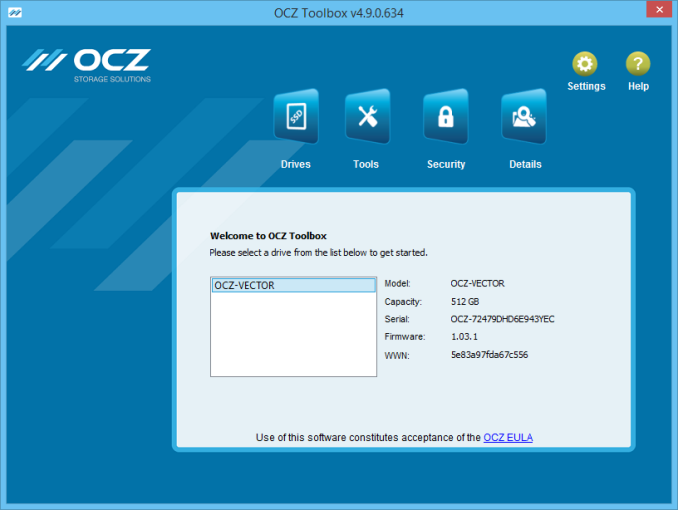
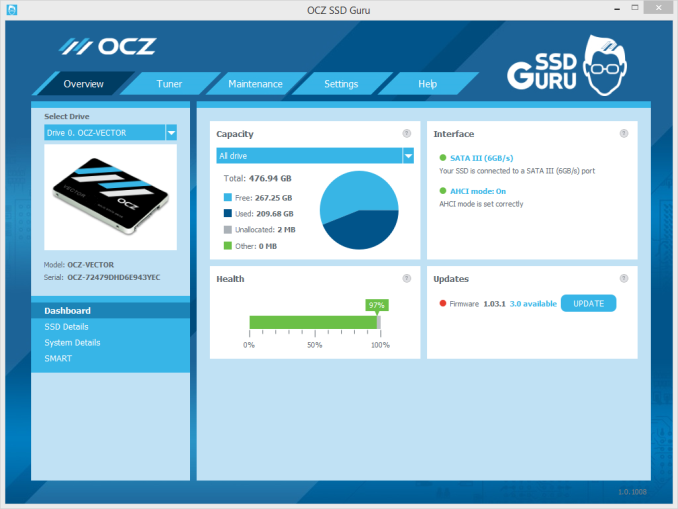
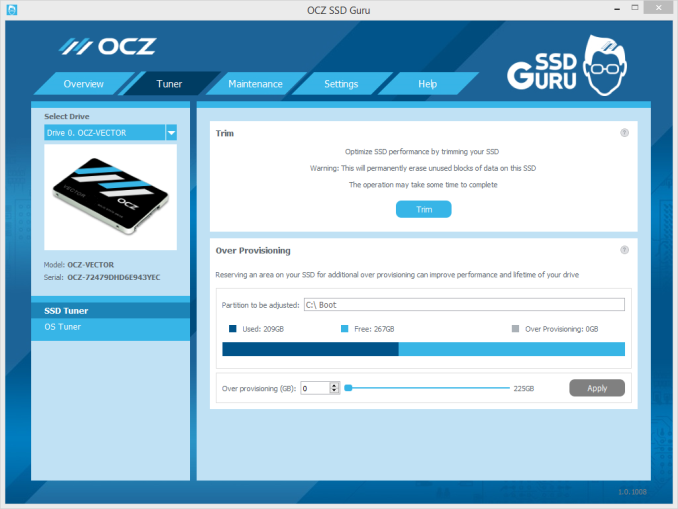
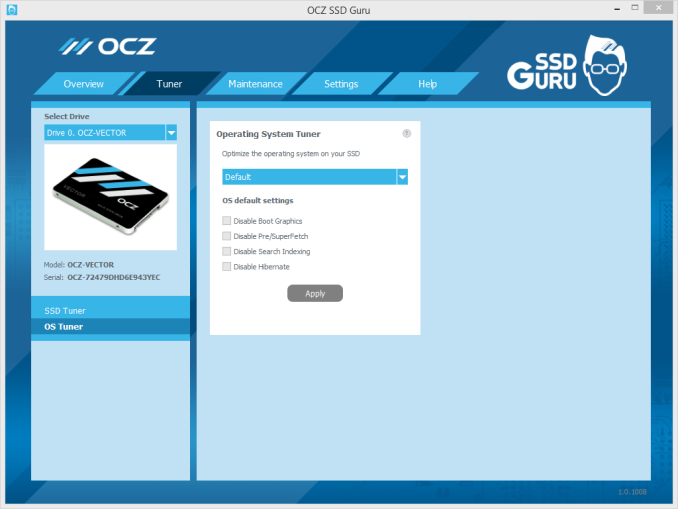
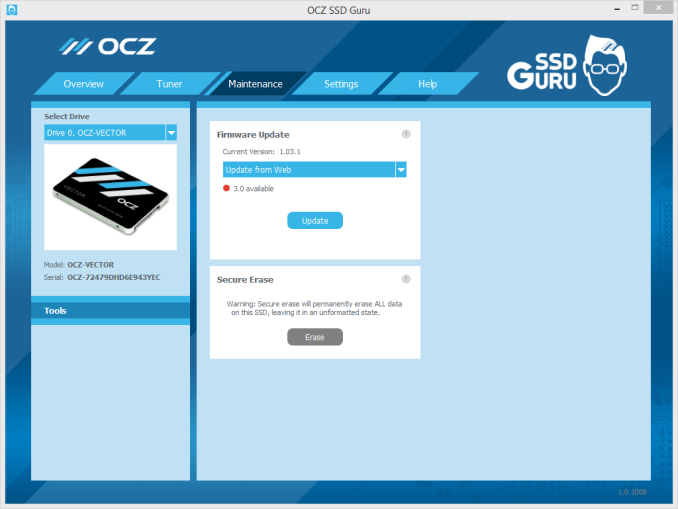
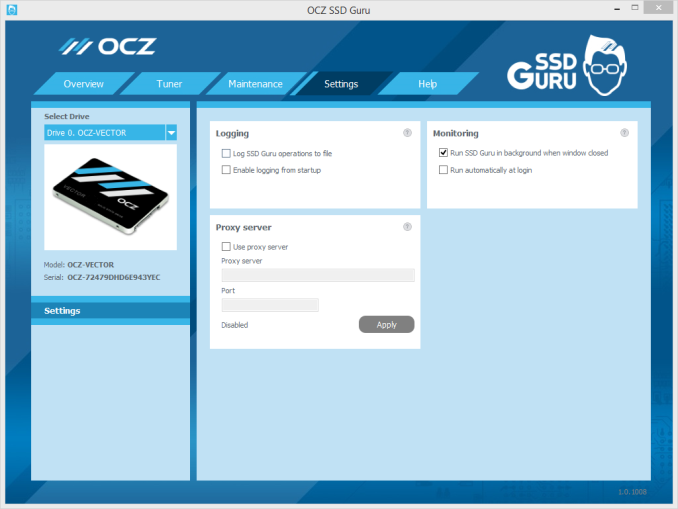
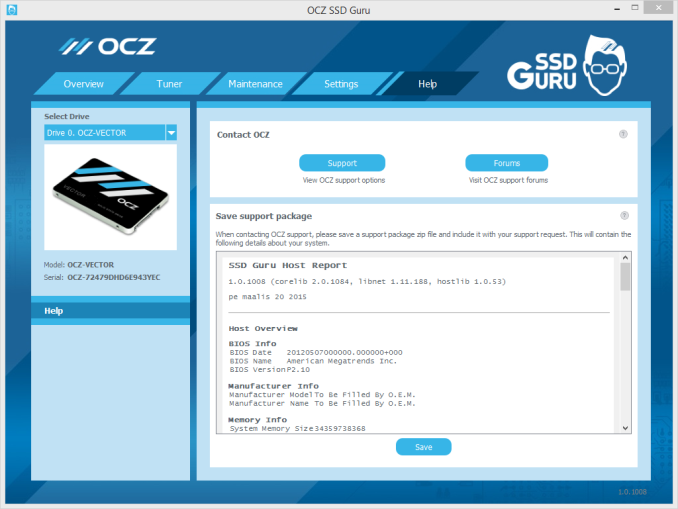
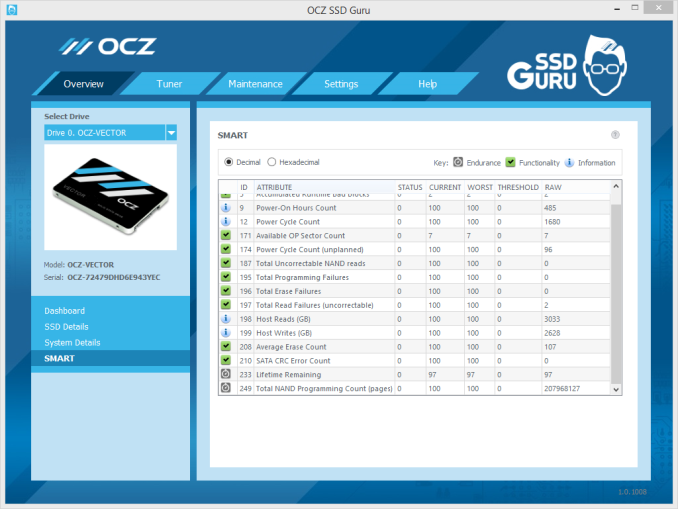








89 Comments
View All Comments
Shark321 - Wednesday, March 25, 2015 - link
Tosh, it's a pity PFM does not work on the internal cache of the drive. You can still get file system damage during a power loss.AVN6293 - Sunday, December 20, 2015 - link
Does this drive support Opal 2.0 eDrive (FIPS/Hippa compliance) ?AVN6293 - Sunday, December 20, 2015 - link
...And can the over provisioning be increased by the user ?ats - Wednesday, March 25, 2015 - link
Actually, all consumer drives need power loss protection and they realistically need it much more than drives targeted at the actual enterprise side of the market. It comes down to simple probabilities. The average enterprise SSD is going to be backed by at least 1 additional layer of power loss prevention (UPS et al), have a robust backup infrastructure, and likely mirroring (offsite) on top.In contrast, consumer drives are unlikely to have any power loss prevention, unlikely to have anything approaching a backup infrastructure, and highly unlikely to have robust data resiliency(offsite mirroring et al).
So like many others, Anandtech gets it exactly wrong wrt PLP and SSDs. The fact that manufacturers have been able to get away without providing PLP on consumer SSDs is almost criminal. The fact that review sites accept this as perfectly OK is pretty much criminal on their part.
And what should pretty much be a rage storm for consumers is the actual cost of providing PLP on an SSD is literally a couple of $ in capacitors. Not to mention many consumer drives without PLP have enterprise drives using the exact same PCB with PLP. That we as consumers have allowed companies to have PLP as a point of differentiation is to our great detriment, esp when the actual cost of PLP is in the noise even for cheap low capacity SSDs.
If a drive cannot survive a power loss with data integrity then it certainly shouldn't get a recommendation nor should any consumer even consider it.
Shiitaki - Wednesday, March 25, 2015 - link
You do raise some very good points. I think the enterprise still needs it because they want as many ways to protect the data that they can get, after all it's only a couple of bucks. The consumer would benefit to a greater degree since that is likely all they would have is the caps in the SSD. However the consumer is their own worse enemy, a couple of bucks makes a difference for most consumers.I've had no issues, and until I read this article, gave no thought to pulling power on a system using an SSD! And I've done it ALOT! Not a single bad block yet! And that is with 6 SSD's in various machines from 4 manufacturers and 8 product lines. Though none of them with Windows, all Linux and OS X.
Sometimes I wonder just how wide spread issues really are. On the internet it's hard to tell since it's the angry people doing most of the posting.
In the end though whether you area company or individual, if it isn't backed up. you really don't need it.
trparky - Wednesday, April 29, 2015 - link
I do an image of my system SSD every week and my computer is always plugged into a UPS, and yes, that's my home setup. The power is my area is known to be dirty power, not complete drop-outs but if you measured the voltage output it would make most electrical engineers shake their heads and smack their foreheads.zodiacsoulmate - Tuesday, March 24, 2015 - link
also the Arconis 2013 is basically useless since it only runs on windows 7....ocztosh - Tuesday, March 24, 2015 - link
Hi Zodiassoulmate, just wanted to confirm that the Vector 180 drives are shipping with Acronis 2014.DanNeely - Tuesday, March 24, 2015 - link
That's a step in the right direction; but is still last years product. Acronis 2015 is already out. Am I overly cynical for thinking Acronis offered the 2014 version at a discount hoping to make it up by convincing some of the SSD buyers to upgrade to the new version after installing?Samus - Tuesday, March 24, 2015 - link
Acronis TrueImage 2015 is complete shit. Check the Acronis forums: most people (like myself - a paying annual customer since 2010) have gone back to 2014. The most recent update (October) still did not fix issues with image compatibility, GPT partition compatibility (added for 2015) and UEFI boot mapping. Aside from the lingering compatibility, reliability and stability issues, the interface is terrible. They've basically turned it into a backup product for single PC's instead of a imaging product. Even the USB bootable ISO I typically boot off a flash drive for imaging/cloning is inherently unstable and occasionally even corrupts the destination. Nobody has confirmed the "Universal Restore" works for Windows 7, yet another broken feature that worked FINE in 2014.Acronis lost me as a long-time customer to Miray because 2015 was SO botched and after waiting months for them to fix it, I gave up and had to find a product that could adequately clone UEFI OS's installed on GPT partitions. I use this product almost daily to upgrade PC's to SSD's. Unfortunately Miray's boot environment is a little slower, even with the verification disabled and "fast copy" turned on, likely because it runs a different USB stack.
I don't blame OCZ for sticking with 2014 like every other Acronis licensee has, including Crucial and Intel. 2014 is mature and stable, but it is not the modern solution - especially with Windows 10 around the corner. Acronis will forfeit this market to Miray or in-house solutions like Samsungs' Clonemaster if they don't get their act together. It's just astonishing how well Acronis was doing until 2015.